They were dismissed as stupid and primitive by the archaeologists who first studied their fossilised bones, but it seems Neanderthals may have been just as chatty as our own species.
Researchers have discovered evidence that suggests Neanderthals may have used vocal communication just like our own species Homo sapiens.
They used 3D scans to analyse the delicate ear bones from both the fossilised remains of Neanderthals and modern humans.
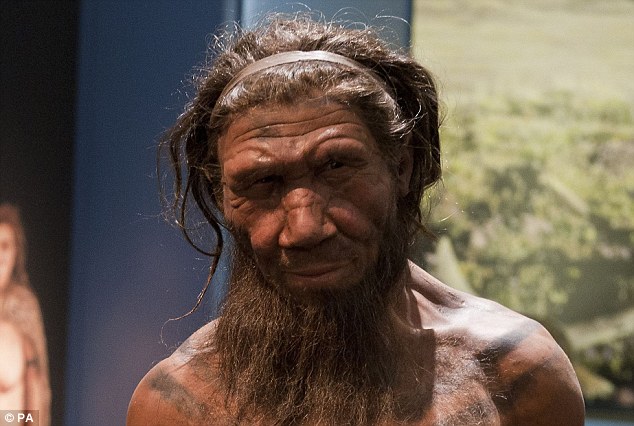
Scientists have found evidence that suggests Neanderthals (reconstruction pictured) may have communicated vocally in similar ways to modern humans. Analysis of their ears suggest they had similar auditory sensitivity that would have allowed them to listen to speech
Using highly detailed ‘micro-CT’ scans they were able to reconstruct how the ear bones, or ossicles, would have functioned when Neanderthals were alive.
They showed that while their ear anatomy was slightly different from those of modern humans, they would have functioned in the same way.
This would have given Neanderthals similar auditory sensitivity to modern humans.
Writing in the journal Proceedings of the National Academy of Sciences, Professor Jean-Jacque Hublin, a paleoanthropologist at the Max Planck Institute for Evolutionary Anthropology in Leipzig, Germany, and his colleagues said: ‘Our results show striking differences between Neanderthal and anatomically modern human ossicles.
‘Despite distinct differences in ossicle morphology, functionally relevant parameters of the ossicles and the surrounding middle ear structures are largely similar between anatomically modern humans and Neanderthals, particularly compared with the African apes.
‘These functionally equivalent solutions could indicate selective pressures acting on the middle ear for conserving a similar auditory sensitivity inherited from the last common ancestor of anatomically modern humans and Neanderthals.
‘It may suggest consistent aspects of vocal communication in the two species.’
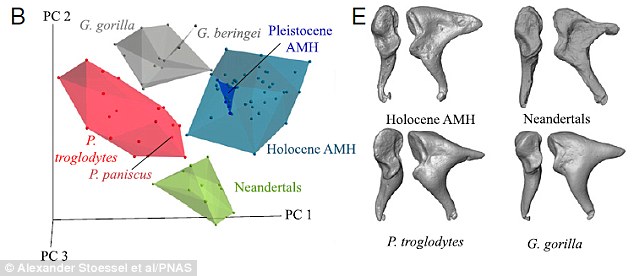
Researchers used micro-CT scanners to build up detailed 3D digital models of the ear bones from anatomically modern humans, Neandethals, chimpanzees and gorillas (pictured)
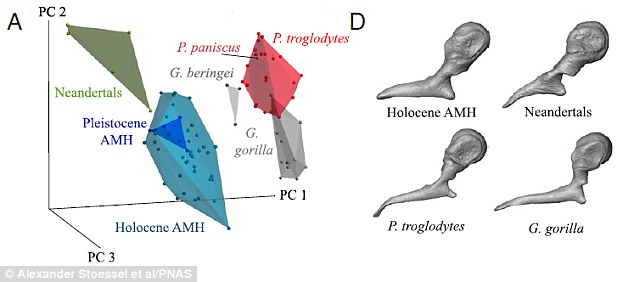
They found while there differences between the structure of the ossicles of Neanderthals and anatomically modern humans (illustrated), they appear to function together in similar ways
The researchers analysed the ear bones from 14 Neanderthals and constructed 3D digital models to examine how they would have functioned within the ear.
They claim the differences in ear bone structure appear to relate to the differences in brain size that can be seen in Neanderthals.
Many researchers believed Neanderthals were a slow-witted and primitive species of early human that only communicated through grunts.
But some research has indicated Neanderthals may well have had the ability to speak.
Genetic research carried out nearly 10 years ago found the same FOXP2 gene in DNA isolated from Neanderthal remains as the one that is found in modern humans.
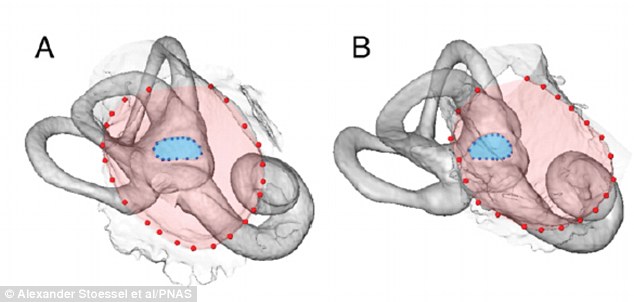
The researchers found that the middle ears of modern humans (left) and Neanderthals (right) appear to function in similar ways
This gene is essential in humans for the development of speech and vocal communication.
Mice that are given the human version of this gene show enhanced abilities to learn.
Recent research has also shown Neanderthals may have made jewellery and perhaps had sophisticated culture.
Professor Hublin said it appears the differences seen in modern humans and Neanderthals are more due to separate paths of evolution rather than a sign that one species is more advanced than the other.
He said: ‘Our findings should also be the basis for future research on the evolution of complex human spoken language.’

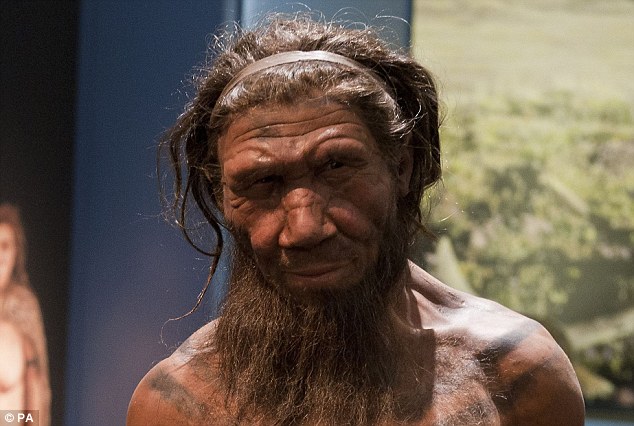
































Leave a Comment
You must be logged in to post a comment.